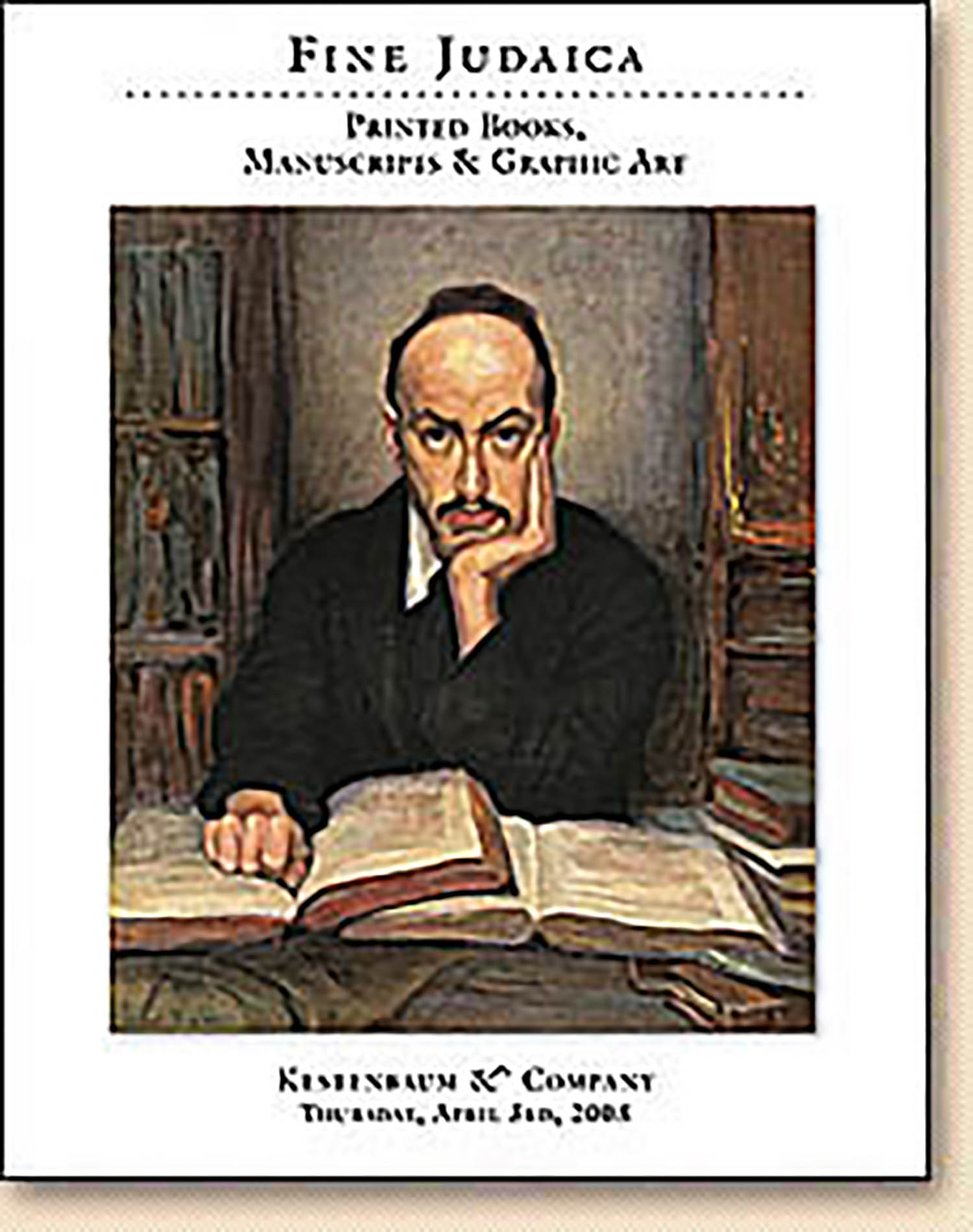Ma’aleh Beith Chorin. Including commentaries by Moses Alsheich, Judah Löw, Ephraim Luntschitz, et al. Translation into Judeo-German by Joel Brill

AUCTION 39 |
Thursday, April 03rd,
2008 at 1:00
Fine Judaica: Printed Books, Manuscripts, Autograph Letters & Graphic Art
Lot 130
(HAGADAH)
Ma’aleh Beith Chorin. Including commentaries by Moses Alsheich, Judah Löw, Ephraim Luntschitz, et al. Translation into Judeo-German by Joel Brill
Amsterdam: The Widow and Son of Jacob Proops 1810
Est: $2,000 - $3,000
PRICE REALIZED $2,250
The map of the Holy Land first appeared in the Amsterdam Hagadah of 1695, which in turn was based on Adrichom's map "Theatrum Terrae Sanctae" (1590). Due to its popularity, this Hebrew map was reissued in the 1712, 1781 and 1810 editions of the Amsterdam Hagadah. The original engraving was done by Abraham bar Ya'akov, a German priest who converted to Judaism in Amsterdam. His name appears at center bottom. To the right of his name, there is a cartouche containing the 42 encampments of the Israelites in the Sinai Wilderness. In the lower right corner is a depiction of the Egyptian Pharaoh seated atop a crocodile (see Ezekiel 29:3). Other fanciful depictions include (bottom left to right): beehives and milk cows ("A land flowing with milk and honey"); an eagle with outspread wings (see Exodus 19:4); King Hiram of Tyre's fleet and rafts; and Jonah first thrown into, and then spewed from, the jaws of the whale. The Land of Israel is presented in landscape fashion, rather than portrait fashion, which is to say, one finds East at the top, North at left, South at right, and the Mediterranean Sea in the foreground. See E.and G. Wajntraub, Hebrew Maps of the Holy Land (1992), W.21 (pp.52-54)
